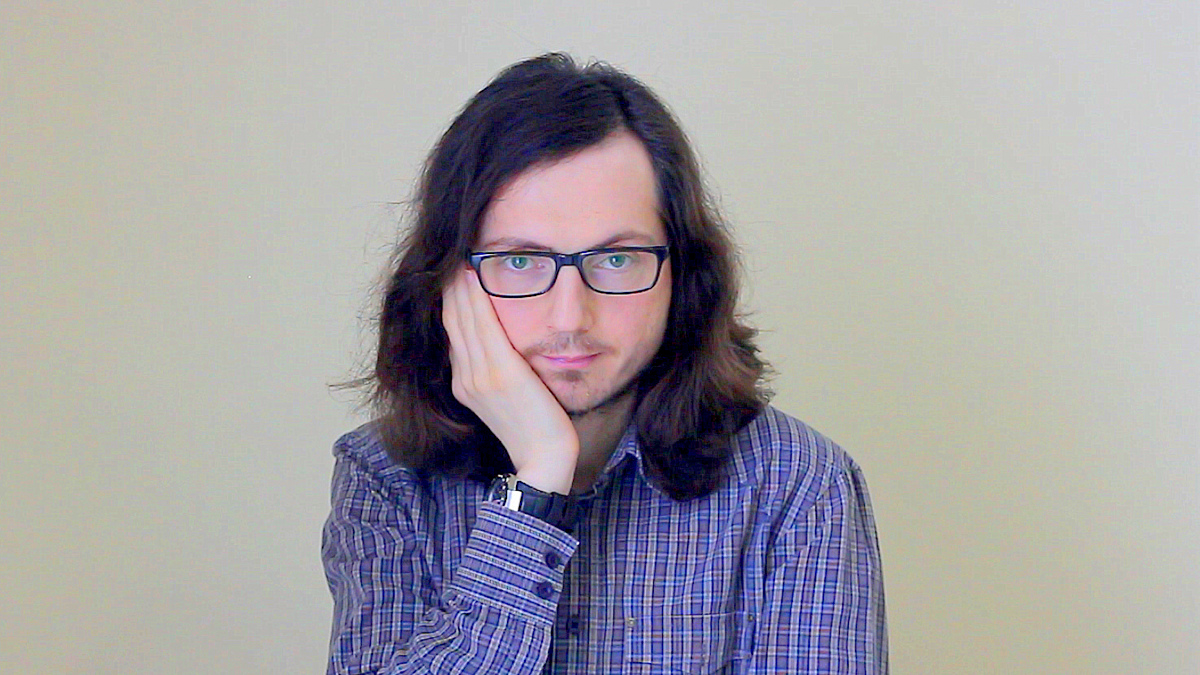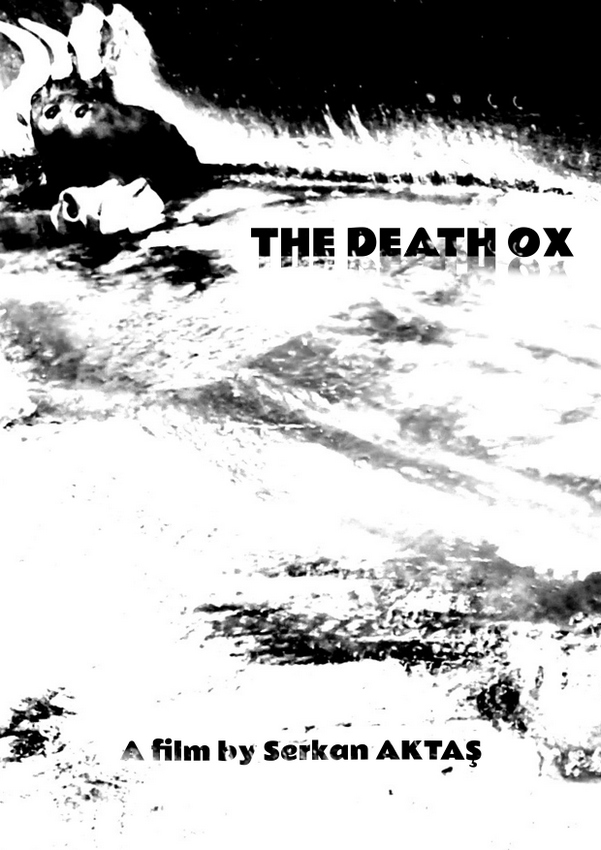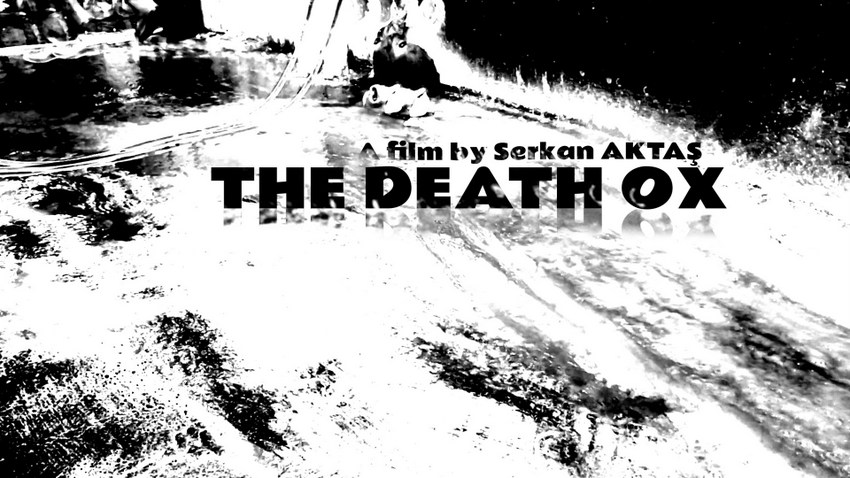An Experimental Film Exploring Life, Death, and the Human Influence on Nature

Serkan Aktaş is an award-winning filmmaker and the most decorated filmmaker in Turkey. With an impressive 215 awards to his name. Globally recognized for his contributions to the genres of fantasy and science fiction cinema. Aktaş has garnered critical acclaim at film festivals around the world. His films are a unique fusion of emotional resonance, intellectual depth, and philosophical inquiry.
Aktaş holds degrees in Business Administration from Anadolu University. And Mathematics from Dokuz Eylül University. Which have shaped his creative approach by blending logic and abstraction with storytelling. He honed his filmmaking skills at the Istanbul Cinema Academy, where he developed a distinctive style that explores complex themes such as human existence, metaphysics, and the unknown. He also earned a Master’s and a Doctorate in Film and Television from Beykent University.
Notable works like The Librarian (2022), Mirrorty (2017), and Resurrection Under the Ocean (2021) reflect Aktaş’s intellectual interests in abstract mathematics, quantum mechanics, and Sufism, weaving these into his narratives to create films that challenge and provoke deep thought.
With his groundbreaking work, Aktaş continues to push the boundaries of cinema, striving to create films that inspire audiences to explore life’s deeper questions. As the most awarded filmmaker in Turkey, Aktaş remains dedicated to shaping the future of cinema with his visionary storytelling. We had the opportunity to speak with Serkan Aktaş, Turkey’s most awarded filmmaker with 215 accolades, to discuss his filmmaking journey and unique storytelling approach in The Death Ox.
Watch the teaser of The Death Ox by Serkan Aktaş
indieactivity: How did you get into directing? How would you describe your style?
Serkan Aktaş (SA): My journey into directing began in 2015 at the Istanbul Cinema Academy, during the making of Lovedex Night Shift. It was a student project where we all wore many hats—writing, editing, recording sound—but directing one of the opening scenes was a turning point for me. In that moment, I saw the immense power of storytelling through visuals and how a director shapes not just a scene, but the audience’s emotional experience. That’s when I knew this was my path.
In terms of style, I’m deeply inspired by filmmakers like Hitchcock, David Lean, Sergio Leone, and Spielberg. What draws me to them is how they blend technical mastery with emotional depth. I aim to do the same—crafting films that engage both the mind and the heart. My camera choices—like extreme close-ups or unusual angles—aren’t just aesthetic; they’re tools to explore the inner lives of my characters. For me, cinema is where logic meets imagination, and my goal is always to create something that resonates long after the credits roll.
Do you hire a casting director, or do you like to choose the cast yourself? If so, what criteria go into your casting?
Serkan Aktaş (SA): I usually collaborate with a casting director, especially when it comes to managing the overall process. Their expertise is invaluable in matching roles with the right talent. That said, when it comes to the protagonist and antagonist—the emotional and narrative core of the story—I prefer to make those choices myself.
For me, casting those roles goes beyond skill or experience. I’m looking for actors who can truly inhabit the soul of the character, who bring something personal and intuitive to the role. Their presence shapes the energy of the entire film, so I need to feel a deep connection between the actor and the role. It’s about authenticity, instinct, and the ability to carry the emotional weight of the story.

What went into the casting process for “The Death Ox”?
Serkan Aktaş (SA): The Death Ox was an entirely spontaneous project. I hadn’t planned to make a film that day—I was actually visiting a slaughterhouse with a few relatives who were customers. The place was packed, full of people going about their business. But something about the atmosphere struck me.
I had my smartphone with me, and its camera was surprisingly high-quality. That moment felt like an opportunity I couldn’t ignore. So I began filming on the spot. There was a butcher preparing to slaughter an ox, and his movements, his focus—it all had a cinematic weight to it. The casting, if you can call it that, happened in real time. I simply observed and followed what unfolded naturally in front of the lens.
Without giving anything away, tell us a little bit about the script, how did you come up with the idea?
Serkan Aktaş (SA): The Death Ox is an experimental video art film that captures the raw and unflinching process of a butcher preparing an ox for slaughter. It’s a meditation on the stark realities of life, death, and humanity’s complex relationship with nature. The idea came to me spontaneously during a visit to a slaughterhouse, as I mentioned earlier. I was struck by the scene in front of me—the butcher’s movements, the heaviness of the moment—and I knew it was something I had to film.
I’ve always been drawn to works that explore the harshness of life, and Cinema Paradiso by Giuseppe Tornatore has been a big influence on me. There’s a scene in it involving a butcher that always stood out to me, particularly because the protagonist, who’s just beginning his filmmaking journey, makes his first film, The Death of a Cow. Similarly, Bernardo Bertolucci’s short The Death of a Pig marked the beginning of his career. Both of these works shaped my desire to create something similar, paying homage to these legendary directors. So, in a way, The Death Ox represents my own cinematic initiation, just as their films did for them.

Who is “The Death Ox” for? Who do you think would enjoy it the most?
Serkan Aktaş (SA): The Death Ox is for those who seek more than just entertainment from cinema. It’s for people who are open to exploring deeper, more existential themes—the stark realities of life and death, and the ways in which humanity shapes the natural world. It’s a film that invites reflection, not just on the process of butchery, but on the larger cycle of life and our place within it.
I want people to experience the same joy and wonder that cinema brings me. For me, filmmaking isn’t just about creating stories; it’s about using film as a tool to engage with the world’s most complex, unsolved questions. As I’ve said before, with my intellectual perspective and filmmaker identity, I strive to contribute to the solutions to real-world problems through my work. The Death Ox is an expression of that—an attempt to bring forward an emotional and philosophical conversation about life and death in a way that challenges viewers to think, feel, and question.
Those who will enjoy it the most are those who appreciate cinema that doesn’t shy away from tough, visceral truths. It’s a film for those who see film as a way to explore the boundaries of human experience, and for anyone curious about the intersection of art, philosophy, and real-world challenges.
How long did it take to shoot the entire film?
Serkan Aktaş (SA): The entire film was shot in just one day at the slaughterhouse. I spent the whole day there, capturing the raw moments as they unfolded. The spontaneity of the shoot really became a part of the film’s essence.

How long was the post-production process?
Serkan Aktaş (SA): The post-production process for The Death Ox took about a week. Primarily due to the time spent perfecting the visual effects. I was dedicated to finding the right effect that would truly capture the atmosphere I wanted. And that search took a bit of time. But in the end, I found the perfect one.
During that week, I also focused on editing the film, crafting the sound effects. And fine-tuning the color grading to give it the right mood. I chose to use Mozart’s Requiem as the musical backdrop. Because, for me, music and film are intertwined—they complete each other. The emotional depth of the piece really elevates the visuals and brings the entire experience together.
The film had a lot of talent working behind the scenes as DPs, sound designers, composers, etc. Why is diversity important both in front of and behind the camera?
Serkan Aktaş (SA): For me, diversity is more than just representation—it’s about blending different ideas, experiences, and skills to create something truly unique. Just as I incorporate abstract mathematics, fractals, and quantum mechanics into my films, a diverse team allows for a complexity and depth that can’t be achieved with a single perspective.
When it comes to The Death Ox, the diversity within the team helped bring a richer, more nuanced vision to life. From visual effects to sound design, each member contributed something essential to the film’s emotional and philosophical core. For example, using Mozart’s Requiem was a deliberate choice to heighten the emotional impact, and this kind of collaboration can only come from a team willing to push creative boundaries together.
Ultimately, diversity allows us to tell stories in new, innovative ways. As I always say, “I want people to experience the same joy and wonder that cinema brings me.” The diversity within our team helped make that vision a reality.
What are your goals with “The Death Ox”?
Serkan Aktaş (SA): My main goal with The Death Ox is to spark deeper conversations around life, death, and our relationship with nature. I want the film to reach a global audience, whether on traditional screens or digital platforms, where it can resonate with viewers open to exploring these themes. Though it’s an experimental project, I hope it contributes to the broader conversation and challenges audiences to reflect on life’s deeper questions.

What’s next for you? What are you working on right now?
Serkan Aktaş (SA): My next project is Kanlısırt – The Blood Ridge, a feature film that I’m both writing and directing. The script is already finished. And the story is set during the intense Gallipoli Campaign of World War I. Focusing on the fierce battle between Turkish and British forces at Blood Ridge. As the most awarded filmmaker in Turkey. My ambition is for this film to become the highest-grossing film in the country. Aiming for 13.5 million viewers. With my level of recognition. I believe it’s important to create a film that reaches a wide audience, and that’s exactly the goal with Kanlısırt. In addition to that, I’ve been collaborating with a friend on a sci-fi robot story for the past 10 months. We’re currently in the process of writing the script, and I’m excited to see where that project takes us.
What would you recommend to a new director at the beginning of his/ her journey? Any special courses, workshops, helpful books they can read?
Serkan Aktaş (SA): To a new director, I’d suggest cultivating a mindset of continuous learning and curiosity. The more you feed your mind, the more creatively you’ll be able to express yourself. Make it a daily habit to read, watch films, and write. This routine helps keep your creative process alive and evolving.
For reading, I highly recommend diving into classic literature, which has been a cornerstone of my own storytelling. Authors like Cervantes, Shakespeare, Victor Hugo, Alexandre Dumas, Jack London, and Charles Dickens offer invaluable insights into character development and narrative structure. Russian writers such as Dostoevsky, Tolstoy, and Pushkin delve deeply into human psychology and emotion, which is essential for any storyteller. I also suggest exploring Eastern literature, particularly the works of Mevlana (Rumi), Sadi Şirazi, and Ferîdüddin Attâr. Their spiritual and philosophical depth can enrich your storytelling in profound ways.
Beyond that, both ancient and modern works hold significant value. The timeless structure of Greek tragedies and the intricate narrative of writers like Marcel Proust can provide a deeper understanding of the human experience, which is vital for any director.
As for courses or workshops, nothing beats hands-on experience, but theoretical knowledge is also important. Film studies, storytelling workshops, and courses in philosophy or psychology can all help expand your understanding of narrative, character, and emotion. A balanced approach to practical skills and theoretical knowledge will serve any director well.
Who is your favorite director? Why?
Serkan Aktaş (SA): My favorite directors include Alfred Hitchcock, David Lean, Sergio Leone, and Steven Spielberg. All of whom have had a profound impact on my filmmaking style and approach. Alfred Hitchcock is a master of suspense, and the ability to create tension. While diving deep into his characters’ psychology. His is something I admire and strive to replicate in my own films. David Lean’s ability to tell sweeping, epic stories while still capturing intimate emotional moments. Especially in films like Lawrence of Arabia and The Bridge on the River Kwai. These two films has always been a guiding light for me. His work shows how to balance grandeur with emotional depth, something I aim to achieve in my films. Sergio Leone’s groundbreaking approach to the Western genre, particularly his use of close-ups, taught me the power of visual storytelling. His films go beyond the conventional, something I aim to do in my own work.
Lastly, Steven Spielberg’s ability to combine adventure, emotion, and spectacle is a continual source of inspiration. His films create an emotional bond with the audience, which is something I always strive for in my own storytelling. Each of these directors has shaped my understanding of cinema and the art of emotional engagement. And I look up to their ability to connect with audiences in such a powerful way.
What advice would you give directors around the world?
Serkan Aktaş (SA): I believe that my unique position allows us to address real-world problems and offer solutions through storytelling. Cinema is more than entertainment—it’s a powerful tool for change. Directors must embrace the responsibility of using their intellectual perspective. And creativity to engage with the world and spark meaningful conversations. As I always say, “I want people to experience the same joy and wonder that cinema brings me.” But also, I believe that cinema can challenge perceptions and inspire action. Directors have the opportunity to influence society through the stories they tell. So, I encourage filmmakers to approach their craft with purpose and intent—creating work that contributes something valuable to humanity. The world needs artists who are not only skilled but who also seek to improve the world with their vision.
Let’s have your comments on Serkan Aktaş interview or on Facebook, Instagram or Twitter
Socials
Filmfreeway
IMDb
LinkedIn
Letterbox
X
Vimeo
YouTube
FILMMAKER INTERVIEWS
Interview with Serkan Aktaş: Director of The Death Ox (2022)
An Experimental Film Exploring Life, Death, and the Human Influence on Nature
Anna Frankl-Duval Unravels Her Career in Film
The New York Based Actress and Singer Discusses Musical Theatre, Plays and Film









